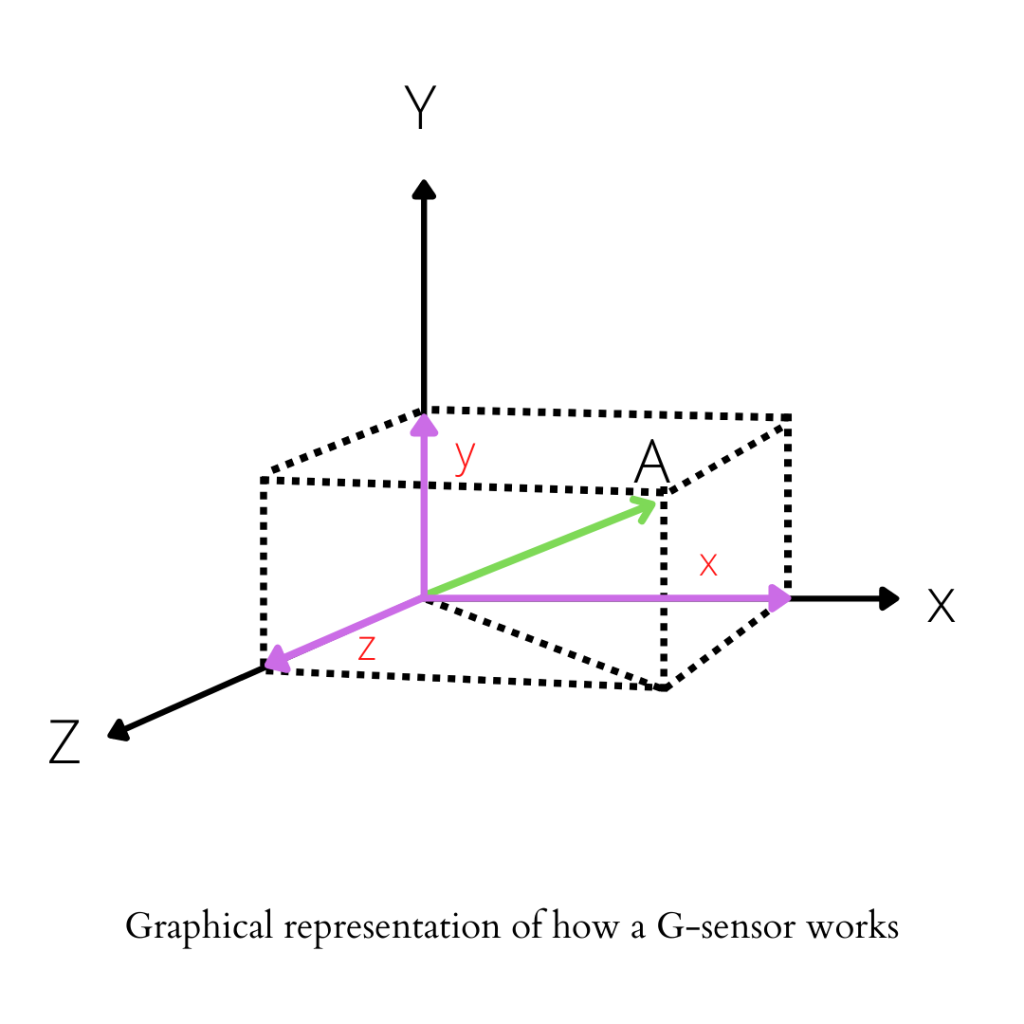What is G-sensor on a dash cam? A G-sensor is a sensor in the dash cam that registers sudden movements and vibrations. Also known as a G-shock sensor, it captures movements throughout the XYZ axis – up and down, front and back, and left and right – of the vehicle. The dash cams use their G-sensors to detect and record movements automatically, and thus works perfectly without a driver’s intervention. Nowadays, mostly all dash cams have an in built G-sensor.
Working of a G-sensor

The g-sensor in the dash cam has the ability to automatically record and store footage. If an incident takes place in or around the vehicle, it gets triggered with the sudden impact as it senses the motion. This gravity sensing function of the g-sensor is based on the Gravity Sensing Image Recording Protection System. The system can record both big and sensitive movements when the vehicle vibrates with some kind of collision during the normal operation of the dash cam.
A set of protection devices make up this system. This set constitutes of a processor, a controller and three sensors. The g-sensor of the dash cam is the sensor part of the gravity sensing system. It is responsible for reading the surrounding of the vehicle, acceleration value and changes in acceleration, whereas the processor and controller are responsible for the drive recorder. When the sensor detects a change in acceleration, or a movement (minor or major), the processor determines when the current gravitational acceleration exceeds the initial level and the controller then launches an instruction to issue an alert to start recording a video. The entire process takes approximately 200 milliseconds. The g-sensor starts recording few seconds before the event occurs and keeps on recording for a minute or two since it is triggered.
The Working Principle of G-sensor
The G-sensor can, thus, read the XYZ axis of the vehicle when the vehicle is subjected to gravity. It works on the movement or vibrations of the body on a micro-scale. After sensing the vibrations, it converts the vibrations into piezoelectric effect, which occurs when energy is generated due to pressure and stress. The piezoelectric energy then converts into electric voltage. That voltage is then used to get velocity and orientation, which is analyzed to determine the next course of action.
Benefits of a G-sensor
A good dash cam comes with a g-sensor which is capable of recording and storing crucial footages during an accident, or other similar situations by perceiving changes in acceleration force.
X axis – notes changes in left and right while the vehicle is accelerating.
Y axis – notes changes in front and back while the vehicle is accelerating.
Z axis – notes perpendicular changes while the vehicle is accelerating.
Good Dashcams with G-sensor
- ELD Mandate: The ELD Mandate dash cam has great video quality along with an in-built G-sensor. The G-sensor works even when the vehicle is shut down, provided the dash cam is connected to a power source.
- Thinkware F70: The Thinkware F70 has a high quality single front camera with an in-built G-sensor.
- Nextbase 412 GW: The Nextbase 412GW has good features. It has quad HD 1440P footage, with thirty frames per second. This camera comes with an in-built G-sensor.
- Thinkware F200 2-Ch: Thinkware F200 2-Ch comes with an in built G-sensor, Wi-Fi and two cameras. The front camera records in full HD 1080P and the rear camera records in 720P HD.
- Lucas V790 1Ch: The Lucas V790 is a high quality, front facing 135 degree wide angle lens camera. It has in-built G-sensor.
- BlackVue DR750S-2Ch: This dash cam produces full HD 1080P recordings on both front and rear cameras. The BlackVue DR750S has in built G-shock Sensor and Wi-Fi, and comes with a 16 gb micro SD card.



